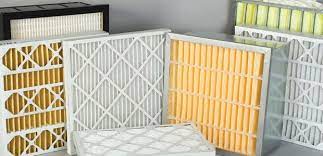Heating, ventilation and air conditioning systems (HVAC) provide heating and cooling for your home. Properly installing a filter for this system ensures the protection of your family. Even if you are not doing any heating or cooling, you should always set the fan running for long or continuously to filter air. And if your system has an outside air intake, keep it open. A 14x14x1 air filter will help to reduce the amount of dust, pollen, and other allergens in the air. It is important to change your air filter every month if you are using central heating or cooling.
Installing MERV 13 filter in your HVAC system goes a long way in keeping your home air clean and safe. It can help to protect you from illnesses due to its ability to filter smaller particles, including viruses. Even though some home HVAC systems may have MERV 8 filter installed as the default, getting this upgraded version ensures efficient air filtering.
Does MERV rating matter?
You can use the MERV rating to gauge how effective an air filter would be for your specific needs. For instance, if your family members are allergic, you would get a higher MERV rating to filter out minute particles.
Additionally, the MERV scale helps balance air quality and the need to remain energy-efficient. It can reveal how badly a filter may perform so that you choose what best works for you. Sometimes, you may think of getting a low MERV rating to save money, but would that be worth sacrificing your air quality?
What MERV rating do I need?
Generally, there are two categories of MERV rating filters:
- Mid-to-lower MERV rating
- Higher MERV rating
The MERV 13 filter falls in the high-end spectrum of the mid-to-lower category. This category comprises a MERV rating of 8 to 13. It is best suited for homes, commercial buildings, and industrial workspaces. Filters with this rating have less restricted airflow while at the same time they require less cleaning and changing.
The MERV 13 air filters are the most recommended for homes. Such a filter is designed to handle coal dust, welding fumes, milled flour, lead dust, legionella, nebulizer dust, bacteria, and viruses effectively.
What the MERV rating chart can reveal
Understanding the MERV rating chart can help you choose the correct air filters for your home. The MERV scale is industry-standard. Therefore, you can use it to compare various air filter brands.
The numerical chart runs from one to 20. The higher the number, the more dust the air filter can capture. The lowest rating implies that the filter would catch the least amount of particles.
In addition, the chart represents the percentage at which the air filter can capture particles based on size. Increasing MERV rating means bigger changes of smaller particles getting caught.
And when you choose the air filter, you still have to consider sizing. For instance, say you go with the MERV 13, you may have to choose a size like 20x20x1 air filter MERV 13 filter.
Do not overdo the higher rating
You may think that getting a MERV rating higher than 13 will always translate to better. That is not the case. Sometimes a higher MERV rating may overstrain your HVAC system despite them trapping more particles. It can also lead to increased energy bills.































